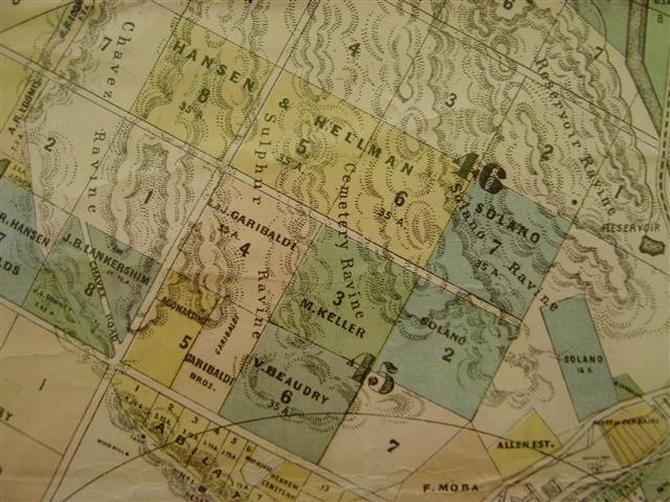Solano Canyon was Settled in 1866

The land that is now Solano Canyon was originally part of 87 acres that were purchased from the City of Los Angeles by Francisco Sales de Jésus Solano in 1866 for himself and his wife, María Rosa de las Mercedes Casanova, and their six children. Natives of Costa Rica, Francisco and Rosa built an adobe and used the land to live on and work. Francisco Solano was a butcher in Sonora Town (just north of the Plaza Church along Calle Principal, or Main Street), and he moved some of his business up to the Canyon while maintaining his slaughterhouse and a corral on Main Street. The land was first called Solano Cañon, then Solano Ravine on maps by 1876. Solano Canyon became a true community after 1888, when Alfredo Solano, the son of Francisco Solano and Rosa Casanova and by then a prominent surveyor, and subdivided the southernmost, 17-acre parcel of Francisco's property into the 100 lots that exist today. This property was known as Solano Tract — later Solano Tract No. 1 — and it is all of that part of present-day Solano Canyon between Solano Avenue and Casanova Street and south of the Arroyo Seco Parkway — now California State Highway 110, the Pasadena Freeway.

Portion of Map of the City of Los Angeles by H.J. Stevenson (1884). One of the only true plat maps of the area, it shows the division of land into blocks (large numbers) and 35-acre lots (small numbers), and it contains the names of early settlers, many of whom are familiar today as place names in Los Angeles history.
“Solano Canyon is set on the rolling hills of Elysian Park, with broad vistas of downtown Los Angeles. This historic community is the last remaining neighborhood that bordered the Chavez Ravine neighborhoods of La Loma, Palo Verde, and Bishop. Although divided by a ridge, Solano Canyon residents considered the Ravine residents to be their neighbors and friends, and many were distraught when the community was torn down in the late 1950s. Today the ridge is gone, swept away by bulldozers to clear a road to Dodger Stadium; but the Solano Canyon community remains as one of the last great neighborhoods of Los Angeles.
“The community boasts a top-notch elementary school, its own Mission Church, and a community garden. It is home both to long-time and new residents that include artists, city workers, musicians, teachers, filmmakers, professionals, and writers. The community’s neighbors include the Los Angeles Dodgers, the Los Angeles Police Academy, historic Chinatown, and Echo Park.
“Tucked away down the hill from Dodger Stadium, impervious to the incessant ruckus of the Pasadena Freeway, is the nicest neighborhood you've never heard of.”
Maryann Hudson-Harvey, Los Angeles Times, 05 November 1999
